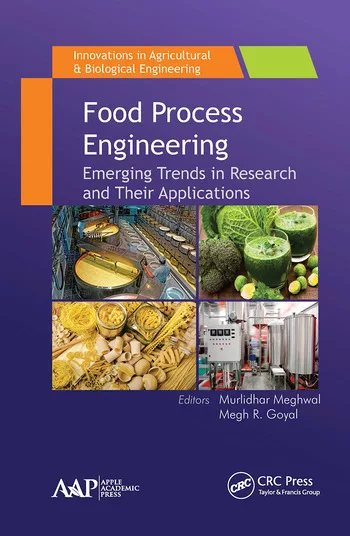Choosing the Right Pump for Poultry Processing Applications

A NEMO pump transfers poultry skin for further processing. Image courtesy of NETZSCH.
Pumps are used in a wide variety of poultry processing operations. While several pump types can be used, positive displacement (PD) pumps designed for conveying viscous products will be most successful. These include progressing cavity, rotary lobe, multi-screw and peristaltic pumps. Pump applications at poultry processing facilities and tips on selecting the right pump to convey product in a food-safe manner during the processing steps or to remove waste from processing operations to a waste facility are important to understand.
Poultry processing pump overview – from front to back
Pumps are a critical component of poultry processing plants. At the front (clean) end, pumps are used for processing and conveying ground meat, deboned meat and meat trimmings, pieces of meat, and chicken sausage.
The use of pumps begins in the slaughtering house, where whole birds (chickens, turkeys or ducks) brought in from farms are killed and cleaned and viscera are removed. Pumps are also used in operations in which birds are cut into pieces for packaging – for trimmings, in which pieces of breast are moved through a production line to be made into nuggets; for conveying sauces and new or used cooking oils; and for transferring viscera from processing steps to supplementary processes for other products.
Food safe pumps move pieces of meat from a processing line where cutting is performed to stations that can be many yards ahead for additional operations, including freezer and cooling systems. These pumps add efficiency and provide a simple transport solution.
At the back end of each processing plant, pumps are used in rendering operations for poultry waste, guts and for conveying sludge from the processing plant to the wastewater treatment plant, where additional pumps are used for chemical dosing/metering.
New trend – x-ray in piping system
In addition to these standard poultry handling applications, pumps are now being used for x-ray in piping inspection systems, which are rapidly becoming a required feature of poultry processing lines. X-ray inspection systems are being installed in an increasing number of poultry facilities at the request of large supermarket chains and food manufacturers.
All food processing plants operate under strict regulations, which include USDA inspectors tasked with ensuring that food products like ground meat do not contain any pieces of metal (like the point of a knife) or solids (for example, bone). Presently every process line has X-ray or metal detectors that are almost 100 percent effective. However, when x-rays are installed in piping, facility operators require a pump instead of a conveyor belt to move the poultry product into the piping. After the x-ray identifies bone or metal, the machine removes the segment of contaminated product. The x-ray solid detector system pump should feature a constant product flow because this will result in a shorter discard window. With pumps that feature a constant flow, the window of rejection in line after the x-ray becomes a fraction of volume as opposed to using a conveyor belt system.
Standards and guidelines affecting pumps for poultry applications
Food manufacturing safety is a serious issue in the United States and is the number one factor in selecting pumps for poultry applications. For example, the Centers for Disease Control and Prevention (CDC) estimates that each year one in six Americans (48 million people) get sick from foodborne illnesses. About 128,000 are hospitalized and 3,000 will die from these illnesses. Food manufacturers have a moral and ethical obligation to provide food safety, and they also have an obligation to shareholders to maintain the brand integrity. According to the Food Marketing Institute and Grocery Manufacturers Association, the average cost of a food recall is an astounding $10 million per incident. In addition, since the passing of the Food Safety Modernization Act in 2010, food processors now face jail time for violating food safety standards.
In the U.S., the United States Department of Agriculture (USDA) regulates meat, poultry, and egg products, while the Food and Drug Administration (FDA) is responsible for all other foods. The USDA sets all the standards and regulations and conducts regular inspections in poultry plants.

All pumps used in processing lines at poultry plants must be FDA-compliant, which means that all materials used in the construction of pumps and equipment are safe and acceptable for food contact, will not present a danger to human health or change the food in an unacceptable way, and that the materials will hold up when used in the environment for which they are intended. The authorities may also require the pumps to be 3-A Sanitary Standards-certified, indicating that they comply with several equipment cleanability factors that will avoid the growth of dangerous microorganisms in the equipment that could later spread to further processes and eventually to customers.
In general, poultry plants must shut down production every day and wash down and clean the whole plant to make sure that microorganisms will not be present in the plant. Some equipment, including the pumps, undergoes a clean-in-place (CIP) process, which means it is cleaned externally and internally without taking the pump from its position. The CIP process includes a sequence of fluid cycles that usually features flushing with hot water, acid and caustic fluids, and then water again. The four types of positive displacement pumps (progressing cavity, rotary lobe, multi-screw and peristaltic pumps) used in poultry applications each have their own CIP procedure, which can be readily integrated into the overall plant cleaning procedures used for all the other facility processing equipment.
Overview of poultry application pump advantages and disadvantages
A variety of pumps are typically used for poultry applications, and each has advantages and disadvantages, including diaphragm, centrifugal or gear pumps. However, positive displacement pumps often represent a superior option, since they are known for moving the viscous product found in poultry processes far better than other options. The table below shows several key poultry applications and provides reasons for considering one of these four available PD options.
Poultry Pump Applications Recommendations | ||
Application |
Pump type normally used |
Alternative positive displacement pump recommendation and benefits |
Chicken trimmings |
Diaphragm pumps
|
Progressing cavity pump
|
Seasoning fluids metering |
Gear pumps
|
Multiple screw pumps
|
Offal and organ meats |
Diaphragm pumps
|
Progressing cavity pump
|
Blood |
Centrifugal pumps
|
Peristaltic pump or rotary lobe
|
Cooking oils |
Gear pumps
Noise is also a concern |
Multiple screw pumps
Some can also serve as same pump for both process fluid and CIP process |
X-ray inspection systems |
Diaphragm pumps
|
Progressing cavity pump
|
Waste food, Including DOA birds |
Centrifugal pumps
|
Progressing cavity pump
|
Waste water |
Centrifugal pumps
|
Progressing cavity pump and Rotary lobe pump
|
Application examples
NETZSCH has served numerous poultry industry processors globally. The following are a few examples of recent applications for U.S.-based poultry processors, which illustrate how different PD pumps can work well in poultry applications.
Conveying trimmings of small parts, up to breast fillets size, with no damage – This poultry processor customer in Alabama purchased two NEMO sanitary progressing cavity pumps that can process up to 5,000 lbs. per hour at approximately 32 gal. per minute (GPM). The company had previously been using a conveyor belt system and found the NEMO better able to handle low to highly viscous product with and without solids and gently convey their product long distances. The progressing cavity pumps also proved to be a more sanitary and economical option.
Ground chicken meat for chicken sausage – The NEMO model with rectangular inlet and feeding screw was used at another global customer’s plant for conveying ground chicken meat for chicken sausage. The pump used was originally sized at 33GPM, 112 PSI, 15HP, 97 rpm.
Internal organs in the evisceration line – At a poultry plant in Texas, the NEMO pump installed has operated with very low maintenance costs since its installation in about 2020.
Sauces and seasoning fluids used in prepared poultry meals – Positive displacement pumps are recommended for this application due to their dosing accuracy, continuous flows and shear-sensitive capability. NETZSCH sanitary multiple screw pumps have been supplied for maintaining better product results by not damaging small pieces of spice contained in applied sauces before packaging.
What to look for in a poultry application pump system
To find the right pump, begin by looking for pumps with the 3-A Sanitary Standard certificate to ensure that the selected pumps have top levels of cleanability. Other useful design standards include the European Hygienic Engineering and Design Group (EHEDG) standards. All NETZSCH pumps for poultry applications also meet this standard, which means that in addition to materials of construction, NETZSCH pumps are designed for cleanability. Standardized radii eliminate nooks and crannies and higher weld quality standards minimize or eliminate areas where pathogens can develop which makes cleaning quicker and more efficient.
Look for pumps that are specifically designed to feature low maintenance costs. Also, seek out pumps that handle the products gently and normally operate at low speed. Another feature to consider is a pump that will handle the products properly when high discharge pressure is required.
Finally, use a consolidated supplier with a long history and one that can provide a high level of technical support during the selection process and can also offer spare parts and local after-sales support. Once installed, look for full support on operations, including maintenance tutorials and training. NETZSCH offers all of these dedicated resources from pump builds, to testing, to packaging for its hygienic pump line, along with in house elastomer development and production which is important when choosing a pump provider.
Take the right steps to select the best pump
To make sure you get the right pump, work with a supplier to define the pump’s application requirements. It is best if the pump supplier works with a distributor or engineering firm to ensure the pump meets the needs of the existing process or any proposed changes. For example, rather than pull any pump off the shelf, NETZSCH offers a variety of features and components that can be assembled into the exact pump for the specific application. By reviewing such parameters as required temperatures, flow pressures, suction capability, discharge, solids presence, and their sizes and percentages, NETZSCH uses the selection phase to ensure the best compatibility with the specific application.
Looking for a reprint of this article?
From high-res PDFs to custom plaques, order your copy today!







